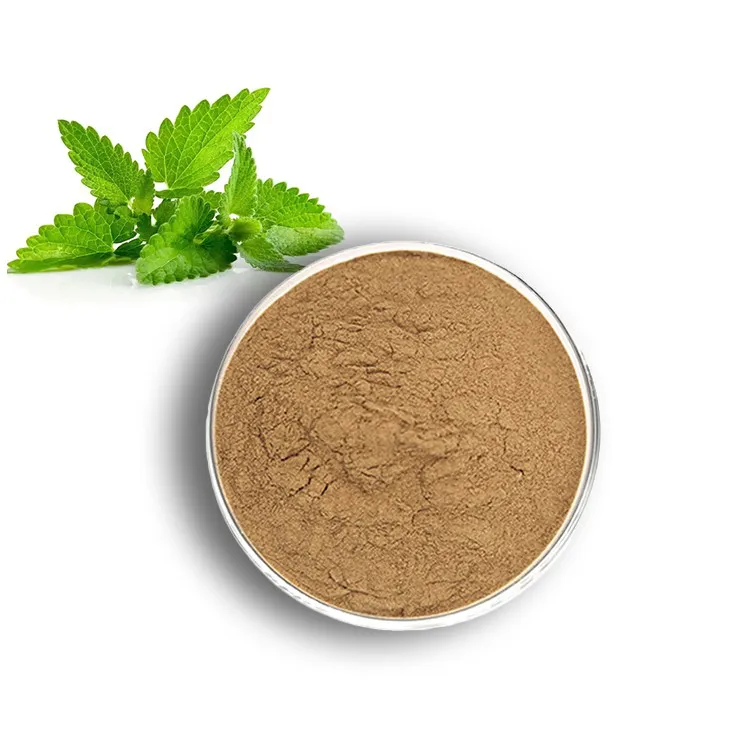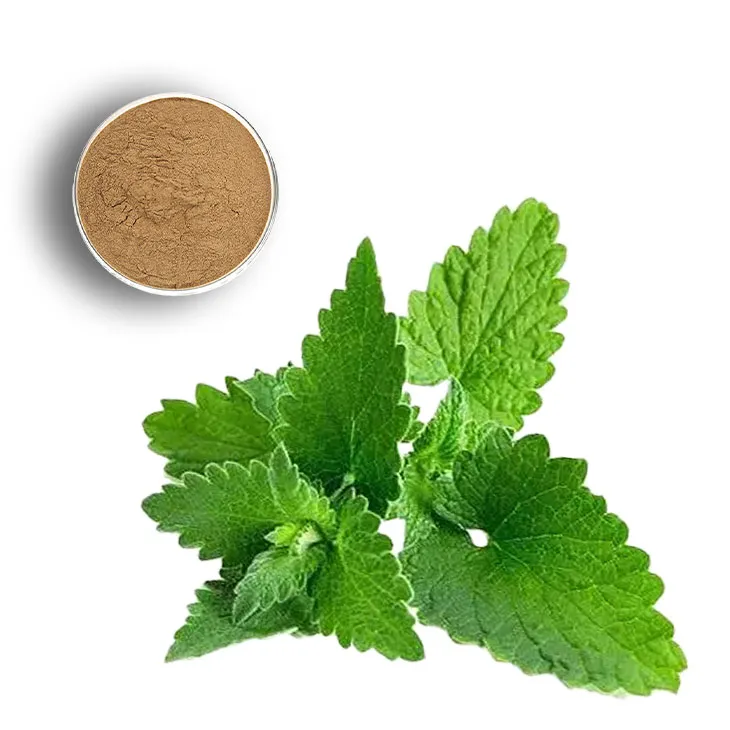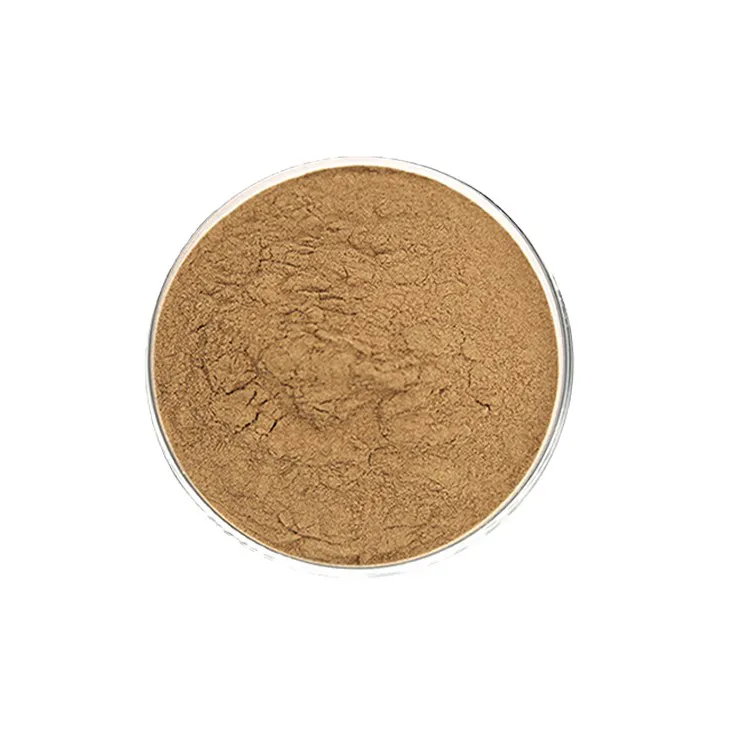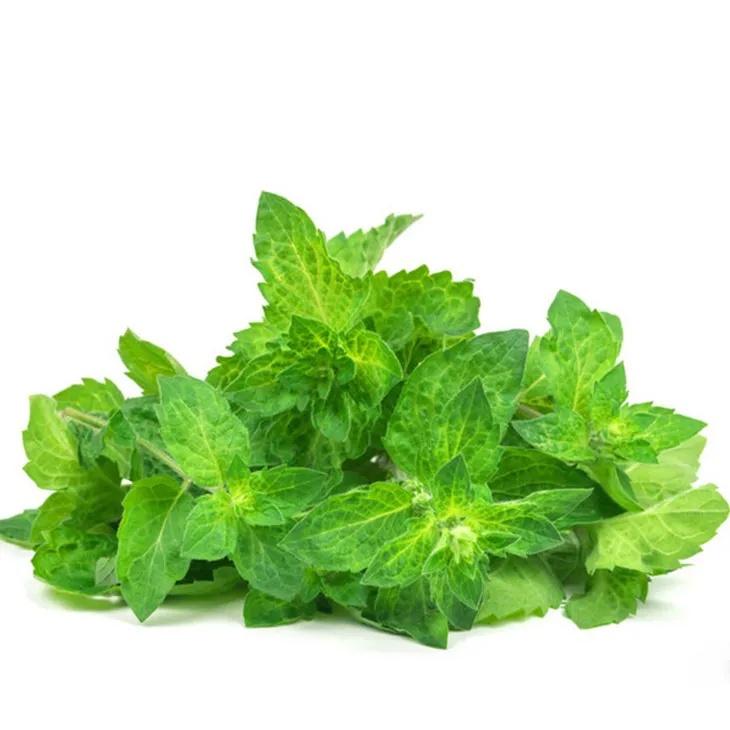- 0086-571-85302990
- sales@greenskybio.com
The process of extracting the active components of lemon balm from lemon balm extract.
2024-11-27

1. Introduction to Lemon Balm and Its Active Ingredients
Lemon balm (Melissa officinalis) is a herbaceous plant that has been cherished for centuries due to its numerous beneficial properties. It is native to the Mediterranean region but is now widely cultivated around the world. The plant is known for its pleasant lemon - scented aroma, which is attributed to its various active ingredients.
The active ingredients in lemon balm possess significant potential in different aspects. In terms of health - promoting, lemon balm has been associated with reducing stress and anxiety. Compounds such as rosmarinic acid and eugenol are thought to have antioxidant and anti - inflammatory properties. These can help in combating oxidative stress in the body, which is linked to various chronic diseases.
When it comes to flavor - enhancing, the lemon - like flavor of lemon balm is a valuable addition to the food and beverage industry. Its essential oils can be used to impart a fresh, citrusy note to products such as teas, candies, and baked goods. This not only adds a unique flavor but also provides a natural alternative to artificial flavorings.

2. The Extraction Journey
2.1 Harvesting and Drying of Lemon Balm
The first step in the extraction process is the proper harvesting of lemon balm. The best time to harvest is usually when the plant is in full bloom. This is when the concentration of active ingredients is likely to be at its peak. Care should be taken during harvesting to avoid damaging the plant.
After harvesting, drying is crucial. The drying process helps to preserve the active ingredients. There are different methods of drying, such as air - drying and oven - drying. Air - drying is a more natural method where the harvested lemon balm is spread out in a well - ventilated area away from direct sunlight. Oven - drying, on the other hand, can be faster but requires careful control of temperature and humidity. Temperatures should generally be kept low (around 30 - 40°C) to prevent the degradation of the active ingredients.
2.2 Physical Extraction
Steam distillation is one of the common physical extraction methods used for lemon balm. In this process, steam is passed through the dried lemon balm. The heat causes the essential oils, which contain many of the active ingredients, to vaporize. The vapor - oil mixture is then condensed back into a liquid, separating the essential oils from the plant material. This method is advantageous as it is a relatively simple and natural way to extract the volatile components of lemon balm. However, it may not be as effective in extracting non - volatile active ingredients.
Another physical extraction method is cold - pressing. This is mainly applicable for obtaining the essential oils directly from the fresh lemon balm leaves. In cold - pressing, mechanical pressure is applied to the plant material to squeeze out the oils. This method is less likely to cause thermal degradation of the active ingredients, but it may not be as efficient as steam distillation in terms of the quantity of oil extracted.
2.3 Chemical - based Extraction
Solvent extraction is a widely used chemical - based extraction method. Organic solvents such as ethanol, methanol, or hexane can be used. In this process, the dried lemon balm is soaked in the solvent. The solvent dissolves the active ingredients, and then the solution is filtered to separate the plant material. The solvent is then evaporated to obtain the concentrated extract containing the active ingredients. Ethanol is a popular choice as it is relatively safe and can dissolve a wide range of active compounds. However, the use of solvents requires careful handling due to their potential toxicity and flammability.
Supercritical fluid extraction is another advanced chemical - based extraction technique. Carbon dioxide (CO₂) is often used as the supercritical fluid. At a specific temperature and pressure, CO₂ reaches a supercritical state where it has properties of both a liquid and a gas. In this state, it can effectively dissolve the active ingredients from lemon balm. One of the main advantages of this method is that it is a clean and green extraction process as CO₂ is non - toxic and can be easily removed from the final product. However, the equipment required for supercritical fluid extraction is relatively expensive.

3. Safety and Environmental Considerations during Extraction
During the extraction process, safety is of utmost importance. When using chemical solvents, proper ventilation is essential to prevent the inhalation of solvent vapors, which can be harmful to human health. Workers should be equipped with appropriate personal protective equipment such as gloves, goggles, and respirators. In addition, the storage and handling of solvents should follow strict safety regulations to avoid the risk of fire and explosion.
From an environmental perspective, the choice of extraction method can have a significant impact. Solvent - based extraction methods may generate waste solvents that need to be properly disposed of to prevent environmental pollution. On the other hand, physical extraction methods such as steam distillation are generally more environmentally friendly as they do not produce significant amounts of chemical waste. Supercritical fluid extraction, with its use of CO₂, also has a relatively low environmental impact. However, the energy consumption associated with maintaining the supercritical state should be considered.

4. Further Development and Integration of Extracted Active Ingredients
Once the active ingredients are extracted, they can be further developed and integrated into various products. In the pharmaceutical industry, the active ingredients from lemon balm can be formulated into dietary supplements or used in the development of new drugs for stress - related disorders. For example, they can be encapsulated in tablets or capsules for easy consumption.
In the cosmetic industry, the antioxidant and anti - inflammatory properties of lemon balm active ingredients make them suitable for use in skin - care products. They can be added to creams, lotions, and serums to help soothe irritated skin, reduce signs of aging, and improve overall skin health.
In the food and beverage industry, as mentioned earlier, the lemon - scented active ingredients can be used to create new flavors. They can be added to natural fruit juices to enhance the flavor profile or used in the production of herbal teas with added health benefits.

FAQ:
What are the main active ingredients in lemon balm?
Lemon balm contains various active ingredients. Some of the main ones include rosmarinic acid, which has antioxidant and anti - inflammatory properties. There are also essential oils like citral, which contribute to its characteristic aroma and may have antimicrobial effects, among others.
How is lemon balm harvested for extraction?
Lemon balm is typically harvested when the plant has reached an appropriate stage of growth. It is usually cut close to the base of the stems. The harvesting time can affect the quality and quantity of the active ingredients. For example, it is often best to harvest in the morning when the essential oil content may be higher. After harvesting, it should be handled carefully to prevent damage and spoilage before the drying process.
What are the differences between physical and chemical extraction methods for lemon balm active ingredients?
Physical extraction methods for lemon balm active ingredients often include steam distillation. In steam distillation, steam is passed through the lemon balm plant material. The heat causes the volatile components, such as essential oils, to vaporize. These vapors are then condensed back into liquid form. Physical methods are generally considered more natural" and may preserve the integrity of some components better. Chemical extraction methods, on the other hand, may use solvents like ethanol or hexane. These solvents can dissolve a wider range of active ingredients, including some non - volatile ones. However, chemical extraction may require more complex purification steps to remove the solvent residues.
Why are safety and environmental considerations important during the extraction of lemon balm active ingredients?
Safety is crucial during extraction because some extraction methods involve the use of chemicals or heat. For example, if solvents are not handled properly, they can be hazardous to workers and the environment. Also, improper extraction techniques can lead to the formation of harmful by - products. Environmental considerations are important because the extraction process can consume resources and generate waste. For example, large amounts of water may be used in some extraction processes, and proper waste management is necessary to prevent pollution. Moreover, sustainable harvesting of lemon balm is essential to ensure the long - term availability of the plant.
How can the extracted active ingredients from lemon balm be integrated into products?
The extracted active ingredients from lemon balm can be integrated into various products in different ways. In the food industry, the essential oils or extracts can be used as flavorings in products like teas, candies, or baked goods. In the cosmetic industry, they can be added to lotions, creams, or shampoos for their potential antioxidant and skin - soothing properties. In the pharmaceutical and nutraceutical fields, the active ingredients may be formulated into tablets, capsules, or tinctures for their potential health - promoting effects.
Related literature
- Title: "Extraction and Characterization of Bioactive Compounds from Lemon Balm: A Review"
- Title: "The Potential of Lemon Balm Active Ingredients in Functional Foods"
- Title: "Optimization of Lemon Balm Extract Production for Cosmetic Applications"
- ▶ Hesperidin
- ▶ citrus bioflavonoids
- ▶ plant extract
- ▶ lycopene
- ▶ Diosmin
- ▶ Grape seed extract
- ▶ Sea buckthorn Juice Powder
- ▶ Beetroot powder
- ▶ Hops Extract
- ▶ Artichoke Extract
- ▶ Reishi mushroom extract
- ▶ Astaxanthin
- ▶ Green Tea Extract
- ▶ Curcumin Extract
- ▶ Horse Chestnut Extract
- ▶ Other Problems
- ▶ Boswellia Serrata Extract
- ▶ Resveratrol Extract
- ▶ Marigold Extract
- ▶ Grape Leaf Extract
- ▶ blog3
- ▶ blog4
-
Wholesale Astaxanthin Suppliers.
2024-11-27
-
The best - quality Goldenseal extract.
2024-11-27
-
Certified organic bayberry extract.
2024-11-27
-
100% Pure Natural Troxerutin.
2024-11-27
-
Nature's Bounty Marshmallow Root Extract.
2024-11-27
-
Vitamin B6 Suppliers
2024-11-27
-
Phyllanthus Emblica Extract
2024-11-27
-
Lemon Balm Extract
2024-11-27
-
Mangosteen extract powder
2024-11-27
-
Tongkat Ali Extract
2024-11-27
-
Bilberry Extract
2024-11-27
-
Black Rice Extract
2024-11-27
-
Carrageenan Extract Powder
2024-11-27
-
Yellow Pine Extract
2024-11-27
-
Polygonum Cuspidatum Extract
2024-11-27
-
Gynostemma pentaphyllum extract
2024-11-27




















